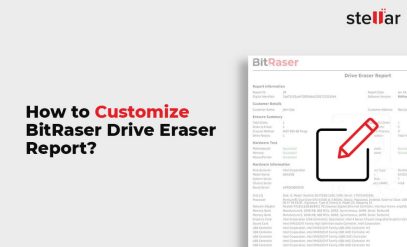IT hardware and other assets are used by organizations to store a huge amount of critical data. Therefore, organizations ensure the implementation of robust security safeguards and protocols at every stage of the hardware lifecycle to protect the data. However, when it comes to the ‘end-of-life’ stage, there is a lack of awareness regarding the safe disposal of IT assets.
If the IT assets are not disposed of properly, it could lead to some serious data privacy concerns. The storage devices contain confidential business data, such as customer information, credit card details, sales reports, etc. If this data falls into the wrong hands, it can prove catastrophic for the company. Hence, it is essential to know the best IT asset disposal methods.
| Read this study conducted by Stellar on second-hand devices. This study was conducted on 311 used devices and it was found that more than 70% of these used devices contained residual data such as PII, personal data, banking information, income tax records, and login credentials, etc. |
Let’s first discuss the repercussions of not disposing of IT assets properly.
Consequences of Not Disposing of IT Assets Properly
1. Cause Harm to your Brand Reputation
If the residual data in your IT assets gets compromised, it may cause a dent in your brand reputation. A data breach event can lead potential customers away from you. Moreover, if the data of an existing customer is compromised, it would mean the customer will part ways with you.
2. Lead to Frauds
Not disposing of IT assets properly can expose your critical financial information to people who can misuse it. They can access your PAN card details, bank account information, payment methods, credit card details, and more. This information can be used for scams, phishing attacks, and identity thefts.
3. Legal Implications
There are strict government regulations in place, such as HIPAA, GDPR, CCPA, etc. to ensure data privacy. If these regulations are not followed, the organization can be subject to heavy penalties. These regulations define proper procedures for safe data disposal that need to be complied with.
Top Methods to Dispose of your IT Assets Securely
Here are some methods to dispose of IT assets securely.
1. Data Erasure
Data erasure is the process of removing the data residing in a storage device permanently. People usually make the mistake of deleting the data or formatting the storage device before disposing of it. However, this does not remove data permanently from the device. Data erasure (wiping) is the only process by which you can ensure complete data removal.
There are several data erasure tools available in the market. The data erasure tools overwrite the storage device (USBs, SSDs, HDDs, etc.) with random patterns, thereby removing the data permanently. There are various data erasure standards, such as DoD 5220.22-M, which businesses need to adhere to for proper data disposal.
After data erasure, anyone can reuse the device without any risk of data breach or theft. Moreover, it does not produce e-waste like other IT asset disposal techniques. Data erasure with an advanced software solution is easy to perform.
2. Degaussing
Degaussing is the process of demagnetizing the magnetic field of storage devices, such as HDDs, magnetic tapes, etc. The magnetic storage devices are available in the market work on the principle of the polarization of the Weiss domains. Simply put, they use magnetic field domains to write and store data. With degaussing, these magnetic domains completely lose their magnetic domains, erasing all the data in the process.
Once a device undergoes the degaussing process, you can never use it again. You can use a hardware tool called degausser to demagnetize the devices. This is an efficient process to dispose of IT assets securely. However, one limitation with degaussing is that it is not effective for all storage devices. The storage devices, like SSDs that use flash memory, cannot be degaussed. Moreover, it is also not efficient with new-age devices with a strong magnetic field.
3. Shredding
Shredding refers to the process of dismantling and physically destroying the storage device, be it USB, hard disk drive, optical drive, or SSD. You can use a shredder to break down the storage device into small pieces (as small as 2 mm). As the physical device is destroyed, so is the data inside it.
However, one of the drawbacks of this type of IT asset disposal is that it creates a significant amount of e-waste. Moreover, shredding involves purchasing a shredder, which leads to additional costs and equipment in your office space. You can also opt for an offsite shredding facility, which could mean a breach in security.
Final Note
Disposing of IT assets properly is essential for organizations to ensure data privacy. Hence, you need to implement secure IT disposal techniques, such as data erasure, degaussing, and shredding. Using these IT disposal methods will help you protect your critical business information.







